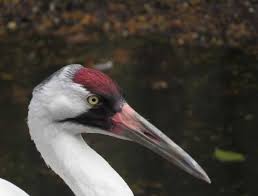
Is Our Cause Winnable?
In the light of plummeting crane populations, a fundamental question for the KZN Crane Foundation, our sponsors, donors, and partners, has been ‘Can we reverse the trend and save the cranes?’
The evidence of international crane conservation programmes and now the evidence of our own programme, is that it can be done.
It’s an achievable goal!
Why we believe it can be done!

The Great Crane Project
Four hundred years ago, many of Britain’s wetlands were drained, robbing cranes of their nesting sites. This resulted in the loss of cranes, as breeding birds, to the region.
The Great Crane Project aimed to bring them back by harvesting eggs from viable populations in Germany and hatching and rearing them in England for release into the wild. Seventy seven birds were reared and released, with a survival rate of 82%. The first birds reared have now reached maturity and are beginning to pair.

Whooping Crane near extinction
The population of Whooping Cranes in the central and south-eastern States of North America dropped from an estimated 10,000 birds before European settlement to about 1,400 birds by 1870. By the middle of the last century, they were on the brink of extinction, with only 21 birds left in the wild. The managed recovery of this population, to around 599 birds today, is one of conservation’s most inspiring success stories.
The Wattled Crane Recovery Project

In the 1800s Wattled Cranes occurred from Swaziland, down to the central and eastern parts of South Africa as far south as the Western Cape. However, their numbers and range retreated in the face of the advance of commercial agriculture and afforestation. By 1982, only 360 birds remained in the region, mainly in the midlands of KwaZulu-Natal. The next decade saw a catastrophic decline in the population to under 200 birds.
Since then, the work of the KZN Crane Foundation, EWT and Ezemvelo and our collaboration in the Wattled Crane Recovery Programme has helped stabilise the population. Over the past decade there has been a gradual increase in numbers to over 300 birds.
Want to Know more about Cranes?
Receive our regular updates directly in your inbox.
